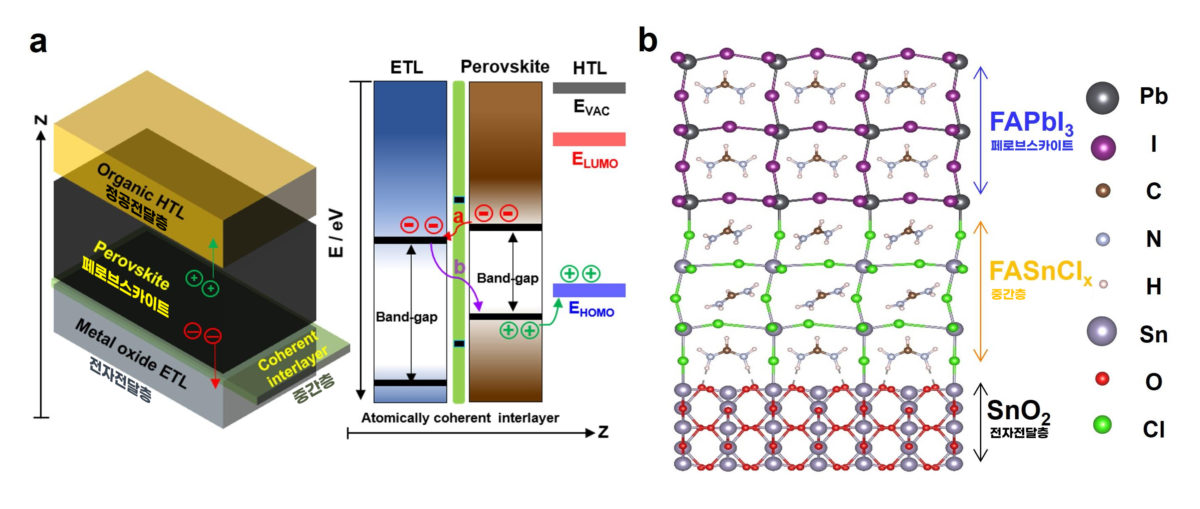Researchers at South Korea’s Ulsan National Institute of Science and Technology (UNIST) claim to have achieved a power conversion efficiency of 25.8% for a single junction perovskite solar cell without the need for passivating the surface of the perovskite layer to reduce interfacial defects.
The scientists said the result is a world record for this kind of solar cell and that the U.S. Department of Energy's National Renewable Energy Laboratory (NREL) certified the achievement of a 25.5% efficiency for the device.
The cell was built with an interlayer between a tin(IV) oxide (SnO2) electron-transporting layer and a layer made of a halide perovskite layer by coupling chlorine-bonded SnO2 with a perovskite precursor containing chlorine. “This interlayer has atomically coherent features which enhance charge extraction and transport from the perovskite layer; and fewer interfacial defects,” the academics explained.
The defect-free connection layer is said to eliminate the risks related to passivation, which may not always provide the desired interface defect reduction, as the surface-treatment agents on the electron-transporting layer may dissolve while coating the perovskite thin film.
Popular content
The cell was also able to retain around 90% of its initial efficiency after 500 hours under standard illumination. “Our findings provide guidelines for designing defect-minimizing interfaces between metal halide perovskites and electron-transporting layers,” said UNIST researcher Seok Sang-il.
The technique to develop the solar cell is presented in the study Perovskite solar cells with atomically coherent interlayers on SnO2 electrodes, which was recently published in nature.
In April, a group of researchers from UNIST and the Swiss Federal Institute of Technology Lausanne (EPFL) achieved a conversion efficiency of 25.6% in a single-junction perovskite solar cell. The result edges out the previous record of 25.2%, achieved in February by scientists at the Massachusetts Institute of Technology (MIT), and UNIST's earlier result of 25.17%, achieved in November 2020.
This content is protected by copyright and may not be reused. If you want to cooperate with us and would like to reuse some of our content, please contact: editors@pv-magazine.com.



2 comments
By submitting this form you agree to pv magazine using your data for the purposes of publishing your comment.
Your personal data will only be disclosed or otherwise transmitted to third parties for the purposes of spam filtering or if this is necessary for technical maintenance of the website. Any other transfer to third parties will not take place unless this is justified on the basis of applicable data protection regulations or if pv magazine is legally obliged to do so.
You may revoke this consent at any time with effect for the future, in which case your personal data will be deleted immediately. Otherwise, your data will be deleted if pv magazine has processed your request or the purpose of data storage is fulfilled.
Further information on data privacy can be found in our Data Protection Policy.